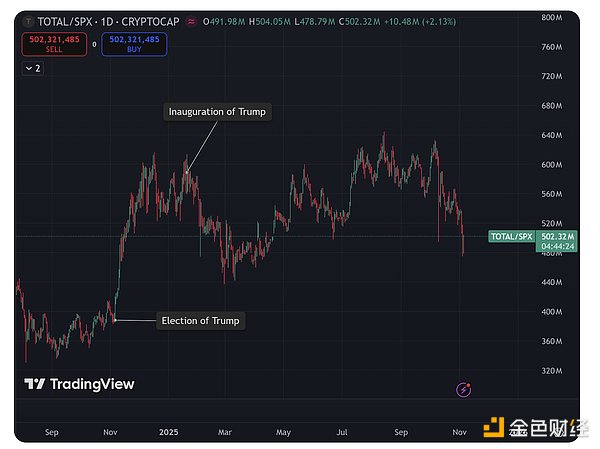Author: Jack Inabinet Source: bankless Translation: Shan Ouba, Jinse Finance
On Monday, October 6, 2025, Bitcoin hit a new all-time high, breaking the $126,000 mark for the first time. Investor optimism was everywhere, from the discussion forums of the cryptocurrency social platform CT to the newsroom of CNBC.
Although the industry fundamentals did not change much in the following month, just four days later, on October 10, the cryptocurrency market encountered a crisis—the so-called 10/10 flash crash, which has now become the largest liquidation event in cryptocurrency history.
In this catastrophic downturn, mainstream cryptocurrencies fell by double digits, many altcoins nearly went to zero, and numerous cryptocurrency exchanges went bankrupt (almost all major perpetual contract exchanges automatically deleveraged their short positions due to their inability to pay). Despite the market's perception of a series of positive catalysts for the cryptocurrency industry following President Donald Trump's election—from the establishment of a strategic Bitcoin reserve to the appointment of a regulatory body ostensibly supportive of cryptocurrencies—recent cryptocurrency price performance has been objectively less than ideal. Aside from a brief rally following Trump's election last November, the ratio of total cryptocurrency market capitalization to the S&P 500 has been nearly flat for a year. In fact, since Trump's inauguration on January 20, this ratio has even surprisingly turned negative.

As the cryptocurrency market continues to grapple with the unknown repercussions of the 10/10 liquidation event, more institutional collapses are likely to surface.
Just this Monday, Stream Finance announced insolvency. This actively managed cryptocurrency income fund, with $200 million in assets, operated on a trust-based model, providing depositors with above-market returns through leverage. The collapse was due to the external fund manager responsible for managing Stream's funds losing approximately $93 million in fund assets.
While specific details remain undisclosed, Stream is likely the first publicly exposed victim of a Delta-neutral strategy in the industry-wide automated deleveraging that swept through the cryptocurrency market on October 10th. Given Stream's fund structure, its collapse wasn't entirely unpredictable, but it undoubtedly caught many lenders off guard—those who sacrificed the safety of their funds in pursuit of higher returns without any specific catalyst for panic. Fears of being the next insolvent institution quickly spread throughout the DeFi space, causing lenders to withdraw from all similar high-risk, high-return strategies to avoid exposure. While the direct risk transmission from Stream appears to be under control, this crash highlights the dangers of the stablecoin cyclical mining strategy prevalent in the DeFi space today—a strategy that leverages deposit tokens of existing high-risk, high-return products to achieve higher returns. Stream's self-disclosed losses also demonstrate that any Delta-neutral cryptocurrency fund can face significant losses during automatic deleveraging: when long positions in the spot market suddenly become worthless, short hedging positions are also unilaterally forced to liquidate. Despite the shift in media headlines, catastrophic losses likely occurred on October 10th. The cryptocurrency yield fund sector has accumulated billions of dollars in leverage, whether through transparent DeFi channels or covert CeFi channels. Whether the market will have sufficient liquidity to absorb these positions should another wave of liquidations occur remains questionable. It's unclear who is taking the fall, but it's certain that some are swimming naked in this cryptocurrency casino. If the market falters again, especially if lawsuits allege centralized exchanges were already insolvent during the 10/10 liquidation, the question will no longer be whether losses will occur, but whether the entire industry can withstand such an impact.
 Anais
Anais







